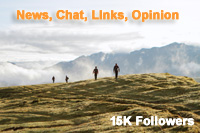The AR World Championships - Costa Rica
Slow Boats to Rincon
Rob Howard / 03.12.2013


Slow Boats to Rincon
The first big paddle stage of the race is a beautiful paddle around the coast to reach the eastern bank of the Osa Peninsula. For the leaders it was a paddle on calm seas, to checkpoints on small islands and sandy beaches overhung with palm trees, idyllic in many ways, but you can have too much of a good thing! After 10 hours labouring in slow inflatable boats, in hot and sticky conditions, the leading teams were glad to get out of their boats at the finish at Rincon, stretch their legs, attend to their sore spots and recover from cramp and dehydration.
First to arrive at the end of the stage, a muddy inlet beside a wooden jetty, were Seagate and Thule Adventure, and as usual Seagate were quickly through and away first. Thule said they had seen some monkeys on the shore and Seagate a ray leaping about in the sea, but there are no reports of sea snakes – not yet anyway. In this area and on the trek across the peninsula all of the teams will have a good chance to see some wildlife as this is the most bio diverse place on the planet.
Team Haglofs Silva were next to arrive, again passing through quickly and after a gap a group of three chasing teams came in, Quasar Lontra, Tecnu and Columbia Vidaraid. All arrived together, and all were busy as this was a complex transition. First the teams had to carry the boats 50m up the track, then they deflated them before carrying the heavy boats a further 50m to the trucks which would transport them to the next Transition (where they will have to pump them up again!).
At the same time they had to sort out and prepare to carry all of their kayaking gear (pfd’s, paddles, seats, sails, trolleys etc.) on the following 27km trek. This is a heavy load to haul in the heat and when they get to the end they will recover the boats and have another 10km portage with them! The reason is the race felt they couldn’t transport all the paddle gear across to the other side of the peninsula but it is a harsh ask of the teams and will be mentally tough.
It will also mean the leaders will arrive on the far shore for the next paddling stage in the dark, and this will make the score orienteering navigation in a huge tidal mangrove swamp even harder – as if it were not hard enough already.
The chasing teams were quick enough to voice their opinions on the paddle. “Boats, they are more like barges,” said Bob Miller of Tecnu. “Seriously they are terrible and I think the fastest we made was 6k an hour. Everything is sore after sitting for 12 hours. As the team struggled to deflate and roll the boats I asked Garrett Bean it they had used their sails at all, and he said, “Not at all!” I think all the teams have bought them, but it is not often sails give a big advantage. Teams don’t want to give any advantage to their competitors however, and there is a lot more paddling to do on the race, so they might yet play their part.
Kyle Peter was looking forward to sleeping tonight though he knew foul tides might mean they couldn’t and Bob Miller was already feeling how tough the course is. “These were supposed to be the smoother legs,” he said, “and so far it’s been brutal. I don’t think many teams will finish.”
Next in were the two adidas teams, from the UK and Sweden. At the world champs 2011 these two teams were in a sprint finish and they are once again evenly matched. “That was too long,” said Nick Gracie. Warren Bates chipped in, “No, the boats were too slow, they are designed for floating down rivers, not use on flat water.”
Teams will be arriving at the transition into and through the night, and further down the field they will be taking even longer to reach Rincon, and will no doubt be even more relieved when they come ashore.







 SleepMonsters
SleepMonsters



